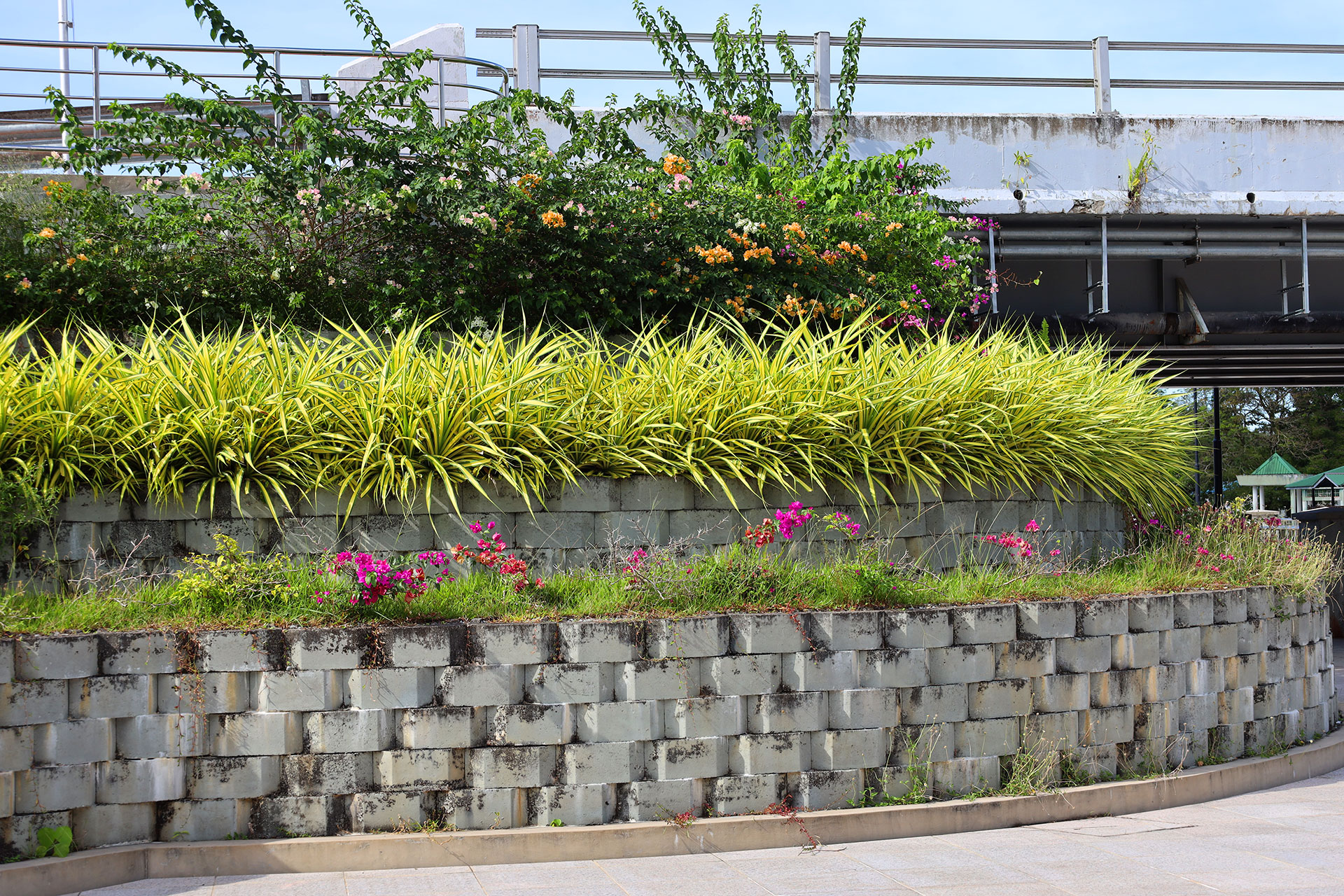
08 Nov Why Most Retaining Walls Fail After Five Years (And How to Prevent It)
At first, everything looks solid. The new retaining wall stands straight and proud, holding back earth with clean lines and fresh stone. But give it a few seasons, some rain, a winter freeze, maybe a little settling, and cracks begin to show. Literally.
By the fifth year, many retaining walls start to lean, bulge, or crumble. The materials might still be strong, but the structure has already begun to lose its integrity. Why does this happen so often? And what can you do to stop it before it starts?
Poor Drainage, The Silent Destroyer
Water is a retaining wall’s biggest enemy. It seeps into the soil, builds pressure behind the wall, and slowly pushes it outward. Even the sturdiest materials can’t resist hydrostatic pressure forever.
A good drainage system, gravel backfill, perforated drain pipes, and properly compacted soil, makes all the difference. The goal isn’t just to hold back soil but to move water away. Without that, every rainfall becomes a slow-motion attack on your wall.
A simple test: after heavy rain, check if water is pooling behind or below the wall. If it is, trouble’s already brewing.
Weak Foundations, Built on Shaky Ground
A retaining wall is only as strong as the ground beneath it. Many failures start here: no proper base, poor compaction, or the wrong materials used for footing.
A strong wall begins with a deep, stable foundation, usually crushed stone or compacted gravel, that allows for both drainage and weight distribution. Skipping this step or rushing through it can shorten the life of a wall by years.
Think of it like building a house on sand. It might stand for a while, but nature always wins in the end.
Wrong Materials for the Job
Not every block, stone, or timber is right for every slope. Using decorative materials where structural strength is needed is one of the fastest ways to guarantee failure.
Concrete blocks without reinforcement, untreated timber, or mismatched stone sizes can shift or rot over time.
Materials should always match both the soil conditions and the wall’s purpose. A garden accent wall isn’t the same as one holding back several tons of earth.
Lack of Reinforcement and Geogrid Support
Gravity alone can’t handle it all. For walls taller than three or four feet, geogrid reinforcement, a mesh-like fabric laid between layers of soil and wall material, is essential. It anchors the structure and spreads the load evenly.
Skip this step, and the soil behind the wall starts to move on its own terms, pulling the structure down with it.
Nature’s Slow Rebellion
Even well-built walls age. Roots push through, frost expands cracks, and time wears away the seams. Regular maintenance, clearing debris, sealing joints, and managing vegetation, extends the lifespan dramatically.
The Path to a Lasting Wall?
A retaining wall that lasts decades instead of years depends on a few key principles:
- Start with a solid foundation.
- Build with drainage in mind, always.
- Match materials to the wall’s true purpose.
- Reinforce properly for height and pressure.
- Maintain it like any other structure.
Conclusion
A great retaining wall doesn’t fight nature; it works with it. Build it with patience, precision, and respect for the forces around it, and it won’t just survive the years.
It will stand proud through them.



Sorry, the comment form is closed at this time.